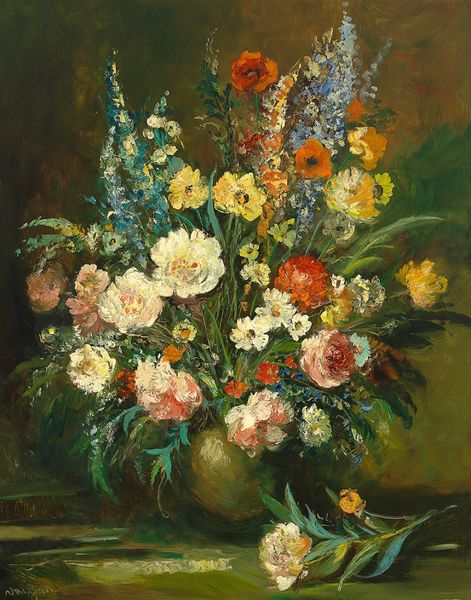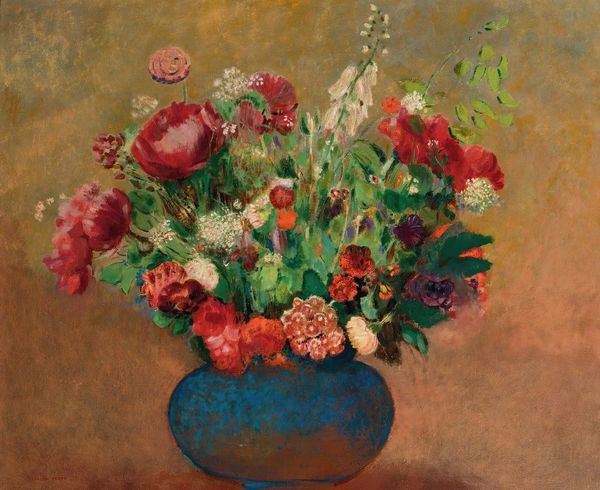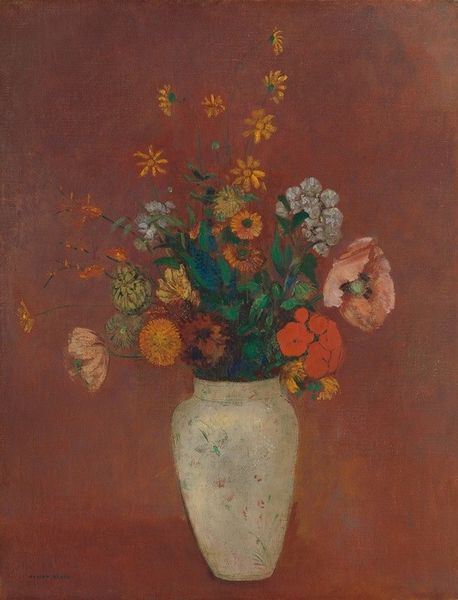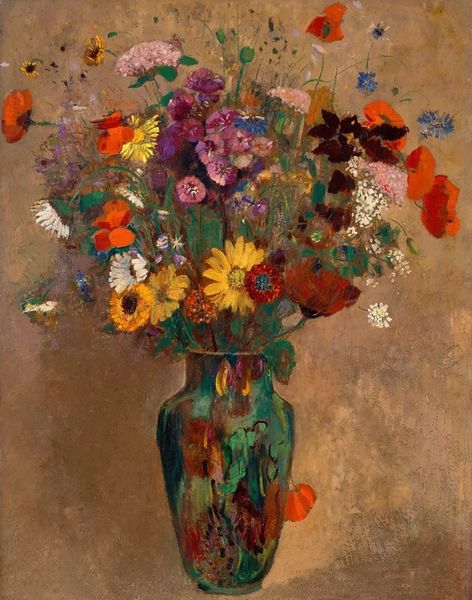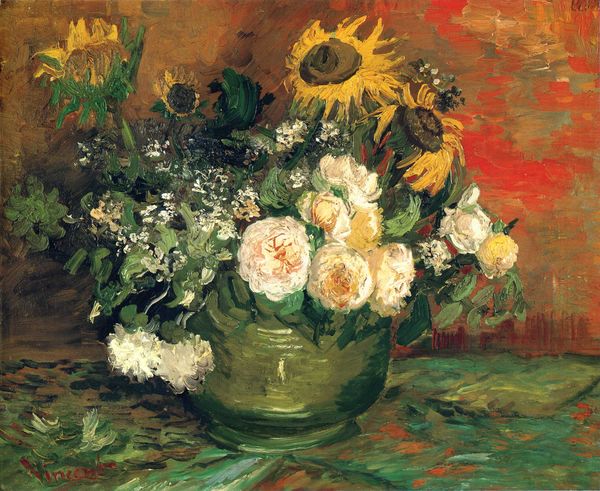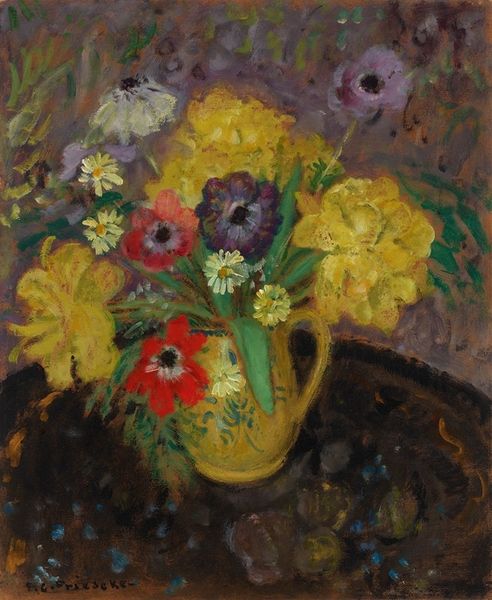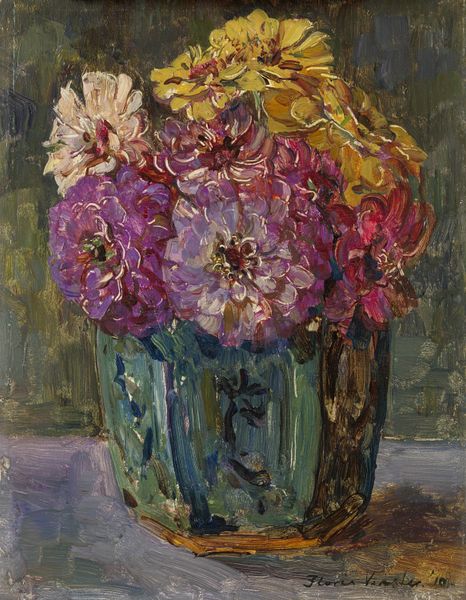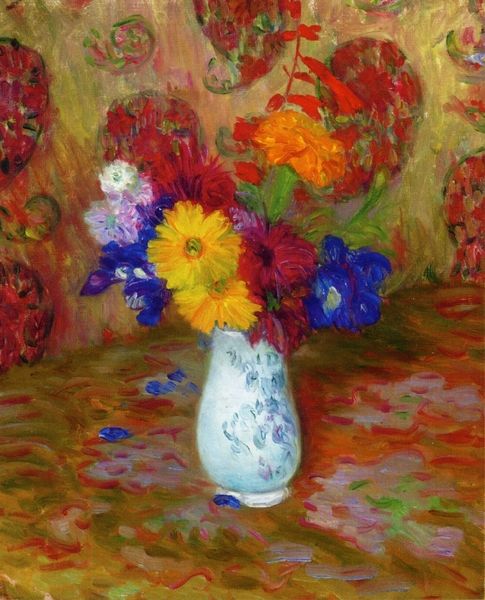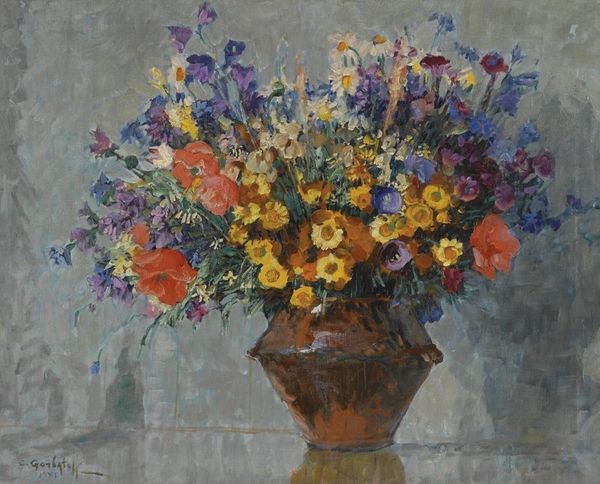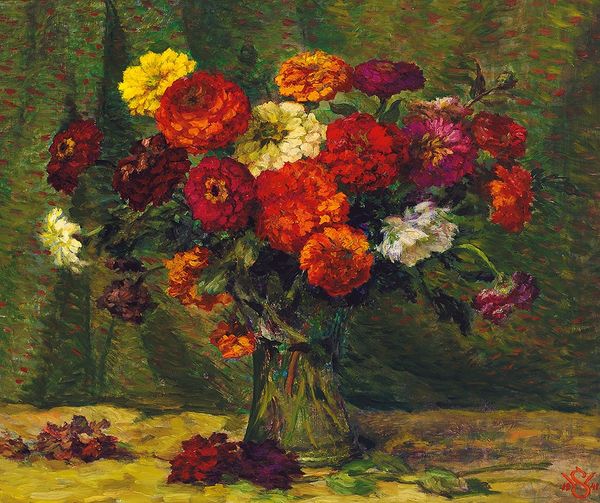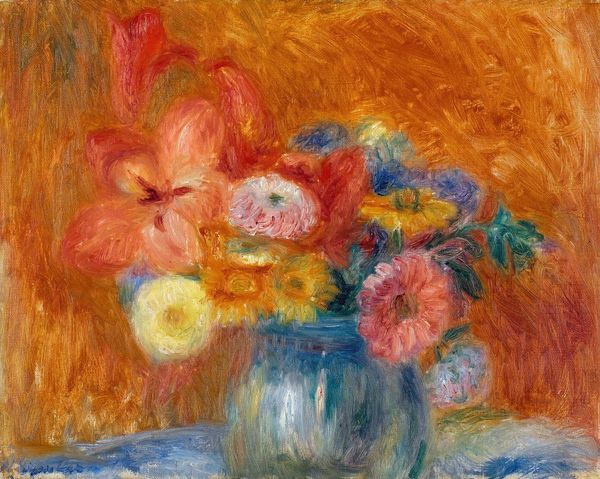
painting, oil-paint
#
painting
#
impressionism
#
impressionist painting style
#
oil-paint
#
flower
#
possibly oil pastel
#
handmade artwork painting
#
oil painting
#
plant
#
painting painterly
#
post-impressionism
Copyright: Public domain
Editor: Here we have Van Gogh's "Vase with Zinnias," painted in 1886 using oil paint. The dark background really makes the flowers pop; it’s a study in contrasts. What do you see when you look at it? Curator: I am immediately drawn to the composition's tension. The arrangement presents a fascinating interplay between the density of the floral mass and the contained form of the vase. Consider how Van Gogh uses impasto to build up the surface; the paint application itself becomes a subject. How does that physicality inform your viewing experience? Editor: It’s true. The thickness of the paint does bring the painting alive, it feels more textured than I first thought! The brushstrokes are really evident. Almost sculptural! Curator: Precisely! Van Gogh's painterly touch elevates the still life beyond simple representation. Notice the vibrant colour palette: how primary and secondary colours juxtapose to create a visually stimulating field. Could we decode this tension of bright color set against a dark background through any number of binary relations? Editor: So the colours are really about creating that tension? Like a formal exercise in contrasts. Curator: It's not simply decorative, it's expressive. He manipulates form and color to achieve a desired visual impact. What would you say that impact is? Editor: Now that I think about it, the dynamic application and jarring contrast create the sensation of raw emotion, it's less placid than most still lifes, even though flowers in a vase seems like a mundane scene. Curator: Indeed. We gain insight when we consider form. It is the artist's deliberate formal manipulation that imbues the ordinary with such an emotive charge. Editor: That gives me a lot to think about. Looking at it through that lens is revealing. Curator: The interplay of structure and colour really highlights how the visual language speaks beyond mere depiction.
Comments
No comments
Be the first to comment and join the conversation on the ultimate creative platform.
